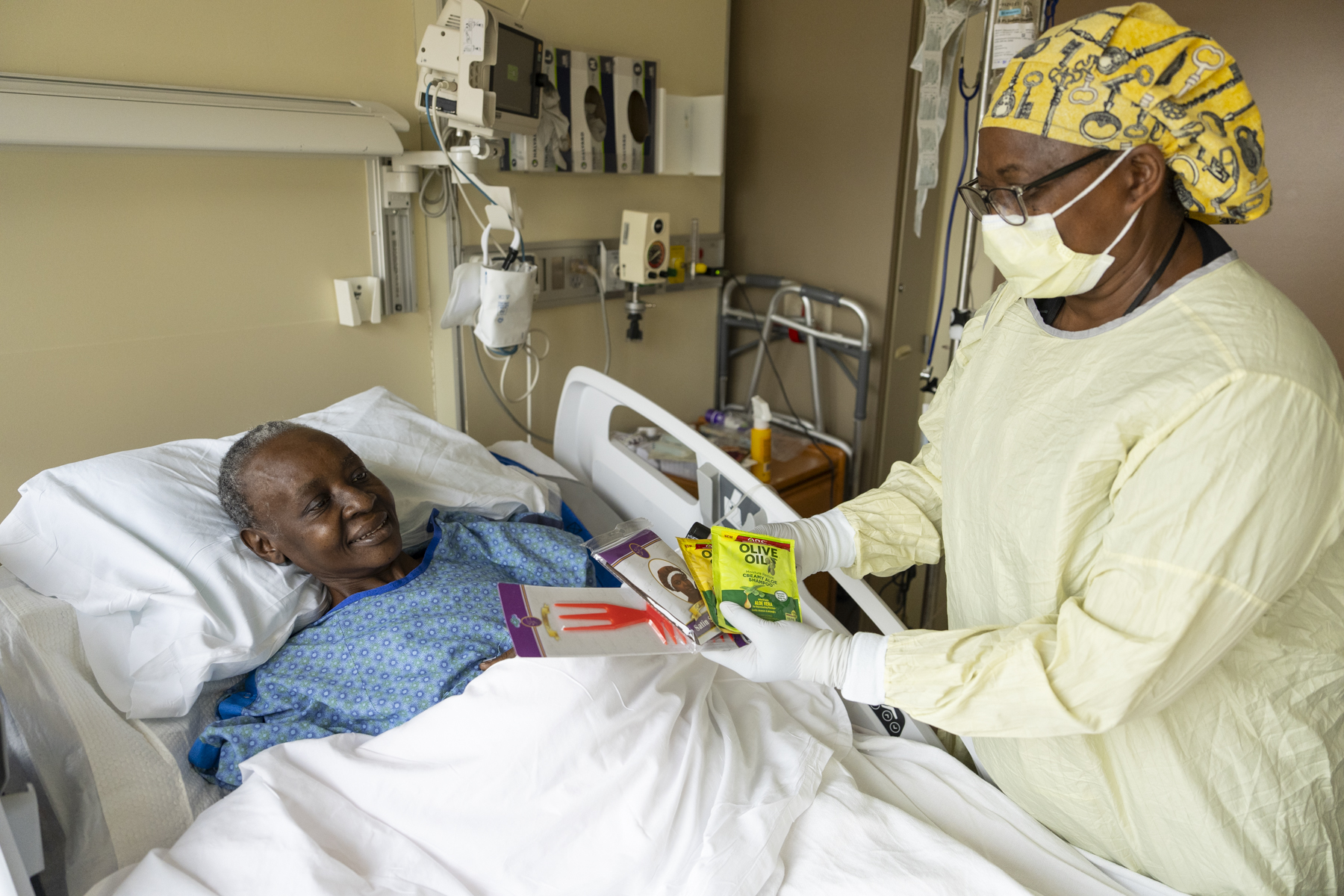Spurred by patient feedback, local hospitals have started to provide culturally appropriate hair- and skin-care products. “It just shows that someone’s talking, and someone might be listening,” one patient says.

Amanda Robinson is a frequent patient on Hennepin County Medical Center’s fifth floor, where she gets treated for a lifelong, chronic illness. That means she is quite familiar with the daily routines and the nurses who feel like family.
So she was surprised during her most recent stay at the Minneapolis hospital when a nurse offered her new hair-care products, including shampoo, conditioner, leave-in conditioner, and detangler that were appropriate for her textured hair, which she wears in locks.
“I’ve been going to this hospital most of my life, and I’ve never seen these products here,” she said. “It just shows that someone’s talking, and someone might be listening.”
Patients across Minnesota have been sharing similar experiences recently, as a handful of hospitals have begun to offer culturally appropriate hair- and skin-care products, including head caps and hijabs.
And though it’s not known how widespread the practice has become, Minnesota hospitals seem to be at the forefront of such efforts. As recently as 2019, an attempt by researchers from the University of Iowa to study the availability of culturally appropriate products in hospitals found that they weren’t available on a wide-scale basis anywhere in the country.
“They love the products,” said Tshilanda Nyembwe, a nurse in HCMC’s internal medicine department. “They are begging us not to stop because we are giving them what they use at home, and they’re happy…. We were taking care of their diagnosis with medication and physical therapy and occupational therapy, but we just missed the little thing that made the difference.”
Patient-inspired, grass-roots efforts
As hospitals increasingly recognize the need for culturally competent health care to improve outcomes and reduce racial disparities, many have adopted Diversity, Equity, and Inclusion initiatives to address obvious shortcomings such as language barriers and the lack of diverse staffing.
Now, some hospitals are discovering that seemingly smaller practices can also have a big impact. “Hospitals are uncomfortable places,” said Dr. Nneka Sederstrom, chief health equity officer at Hennepin Healthcare, which runs HCMC. “You don’t feel like yourself; you feel scared and nervous and vulnerable. And it’s the little things that make you feel safe and whole. We have not been allowing that sense of normalcy to be part of the experience for Black and brown patients.”
Several Minnesota hospitals decided to change their practices after a patient expressed a desire for a product that the hospital didn’t provide, and someone — often a nurse — decided to do something about it.
At HCMC, for example, a nurse who works on the hospital’s fifth floor was lunching with her colleagues when she mentioned a patient ‘s request for certain hair products. The nurse brought some of her own products from home, and soon the floor had a basket of products to offer patients.

